Futurama has developed a cult following partially due to the large number of in-jokes it contains, most of which are aimed at geeks. In commentary on the DVD releases, David X. Cohen sometimes explains the nerdiest jokes. Not all fans have listened to the DVD, so not all of them know the explanation. Of course, there’s an old saying that if you have to explain a joke, then it’s not funny. I’m going to buck that trend by doing just that.
1. Quantum Horseracing
Appearance: “The Luck of the Fryrish”
The Joke: At a racetrack, they use a “quantum finish” to declare the winner. Professor Farnsworth complains, “No fair! You changed the outcome by measuring it!”
The Meaning: The “quantum finish” is about the observer effect. The observer effect means just watching something can change what’s being watched. For example, in experiments, particles will literally change how they behave, depending on whether they’re being watched. Farnsworth is protesting that watching the horse race changed the winner.
2. Schrödinger’s Cat
Appearance: “Law and Oracle”
The Joke: Fry and the robot cop URL track down a traffic violator who turns out to be Erwin Schrödinger, the 20th century quantum physicist. On the front seat of the car is a box, and when questioned about the contents, Schrödinger replies, “A cat, some poison, and a Caesium atom.” When Fry asks if the cat is alive or dead, Schrodinger answers, “It’s a superposition of both states until you open the box and collapse the wave function.”
The Meaning: Schrödinger is most famous for a thought experiment: a cat is placed in a sealed, soundproof box with some poison and radioactive material. If the material decays, it triggers the poison, which kills the cat. If it doesn’t, the cat stays alive. Since we can’t know which happened without opening the box, the cat is both alive and dead until we open the box. Immortality through uncertainty.
3. Error Message
Appearance: “Mars University”
The Joke: When Bender goes to Mars University, he runs into his old fraternity, Epsilon Rho Rho.
The Meaning: Epsilon Rho Rho is abbreviated as ERR, which is an abbreviation of “error,” a reference to errors in programming. And the nerds at ERR certainly had their share of errors.
4. The P/NP Problem
Appearance: “Put Your Head on My Shoulders”
The Joke: In the closet where Amy and Fry are hiding, we can see there are two books in the closet; one labeled P and the other NP.
The Meaning: P and NP refer to a mathematical problem described by Wikipedia as asking “whether every problem whose solution can be quickly verified by a computer can also be quickly solved by a computer.” A deeper explanation of that is beyond my pay grade, but basically all you need to know is that the problem is complex, and currently unsolved. There’s a million dollar prize out there for anyone who can find the solution. The idea that it could be found in a couple of books, tucked away into a closet is kind of like the Mona Lisa in a broom closet. Then again, it is the future.
5. The Infinite Theater
Appearance: “Raging Bender”
The Joke: The crew of Futurama goes to their local theater, which is named “Loew’s ℵ0-Plex”
The Meaning: The ℵ0 (pronounced “aleph-null”) is a mathematical representation of the smallest infinite cardinal number. In other words, the theater has an infinite number of screens. Now that’s convenience.
6. Condensed Milt
Appearance: “Put your Head On My Shoulder”
The Joke: When Fry and Amy are in a same closet, we also see in the background a bottle of “condensed milt.”
The Meaning: Condensed milk is a common household good, just milk in a thicker form. Milt is the seminal fluid of aquatic animals (like mollusks) who reproduce by spraying it onto eggs. There are some countries that eat milt, but I don’t know of any condensed cans of it.
7. BASIC Housekeeping
Appearance: “I, Roommate”
The Joke: Fry and Bender are moving into a new apartment, and hang a sign that reads, “10 Home,” “20 Sweet,” “30 GOTO 10.”
The Meaning: The sign is written in an early computer language called BASIC. Each line in BASIC is numbered, and the term “GOTO” tells the program to go back to the line number that comes after it. In other words, if this were a BASIC program, it would read “Home Sweet Home” in an endless loop.
8. Binary Evil
Appearance: “The Honking”
The Joke: In a haunted house, blood forms “0101100101” on the wall. Bender pronounces it gibberish until he looks in the mirror and sees “1010011010.” He runs off screaming.
The Meaning: In binary, “0101100101” translates to 357. However “1010011010” translates to 666, which is commonly referred to as the Number of the Beast and associated with Satan. That would spook me out, too.
9. Exclusionary Beer
Appearance: “The Route of All Evil”
The Joke: At one point, we see a beer labeled “St. Pauli Exclusion Principle Girl.”
The Meaning: The name “St. Pauli Exclusion Principle Girl” is a combination of the popular beer St. Pauli Girl, and the Pauli Exclusion Principle. In case you were wondering, the Pauli Exclusion Principle states two electrons can’t have the same four quantum numbers.
10. Groin Exercise
Appearance: “Why Must I Be a Crustacean in Love”
The Joke: At one point, the Futurama crew walks through a gym, passing various people on various exercise equipment. One woman is grimacing as a weight goes up and down on a machine labeled the “Kegelcizer.”
The Meaning: David X Cohen called this “one of the dirtiest but subtlest jokes on Futurama ever.” The muscles that form part of the pelvic floor are colloquially referred to as the “Kegel muscles.” A Kegel exercise consists of repeatedly squeezing these muscles to treat sexual dysfunction. The implication is that the woman is working this muscle, and has the machine inserted in herself. And that’s a lot of weight she’s lifting with it.
11. Strong Glue
Appearance: “The 30% Iron Chef”
The Joke: When Zoidberg breaks Farnsworth’s model ship, he tries to fix it with a bottle of Strong Force Krazy Glue.
The Meaning: The strong force (also known as the strong nuclear force, nuclear strong force or color force) is one of four basic forces of nature. The other three are electromagnetism, the weak nuclear force, and gravity. As the name implies, strong force is the strongest of the four, responsible for holding together subatomic particles at the nuclei. So some glue using strong force would be pretty strong. But apparently, not that strong, since Zoidberg gets it all over himself, and manages to get it off. I’d demand a refund.
UPDATE: Fixed numbering, fixed P/NP description
Did you know all these nerdy jokes? What other nerdy jokes can you list from the show? Let us know in the comments.
[Image Source: The Infosphere]
Related Posts
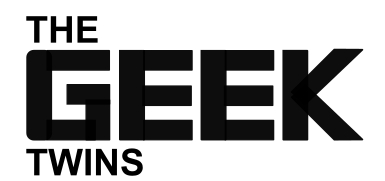

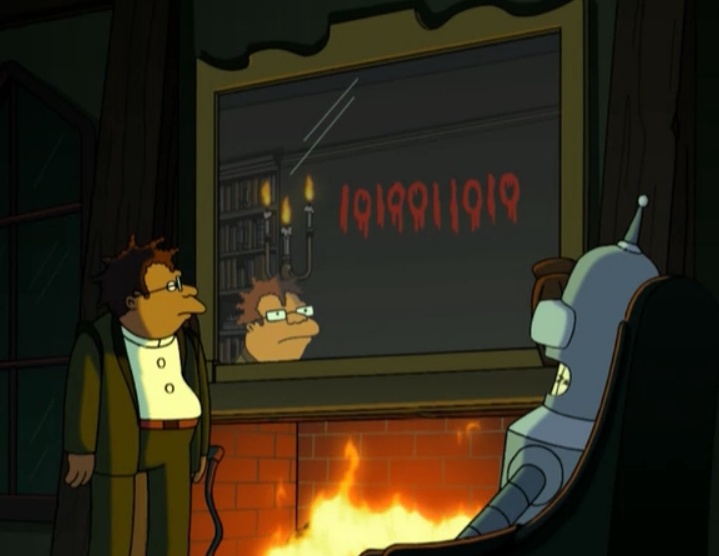
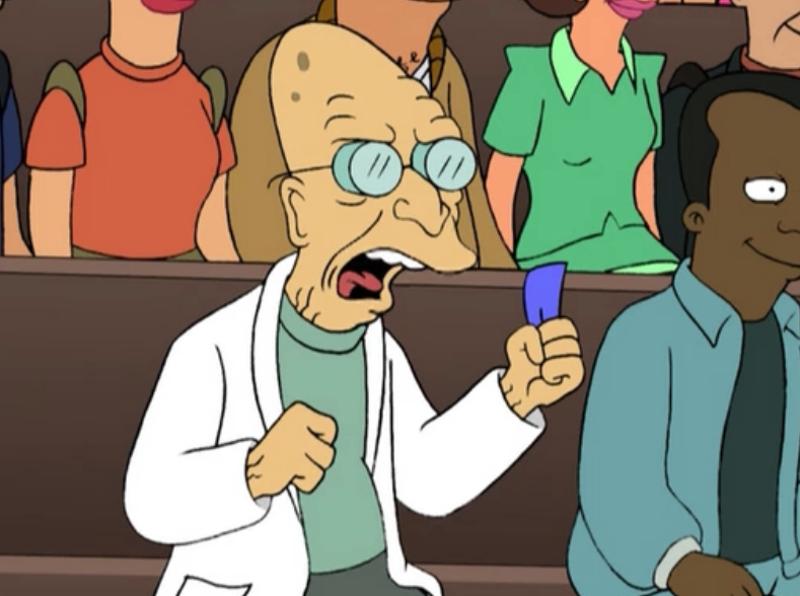
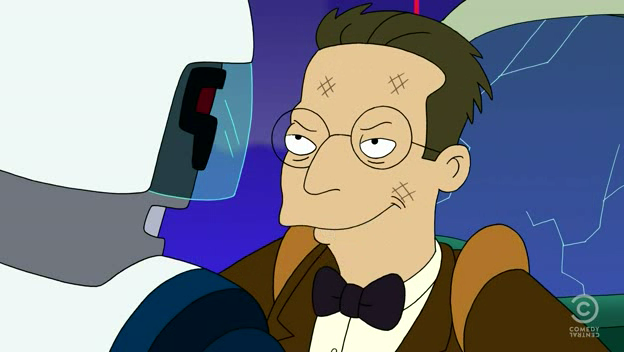
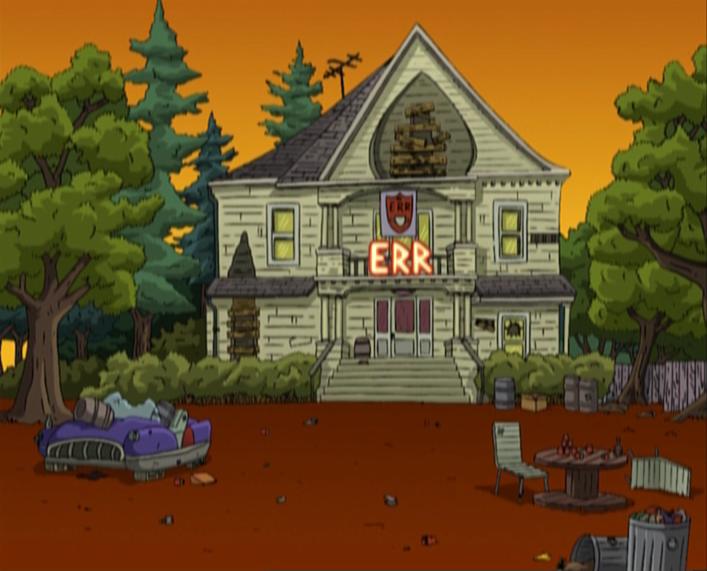


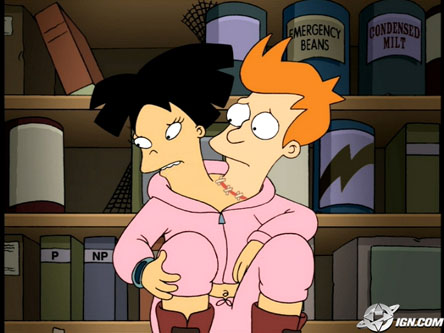
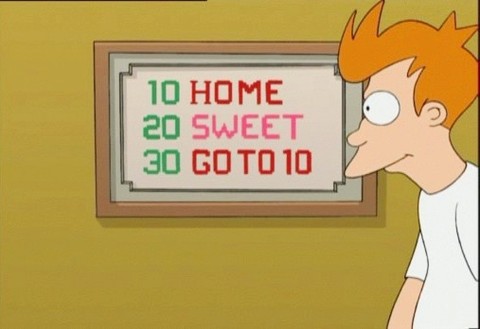
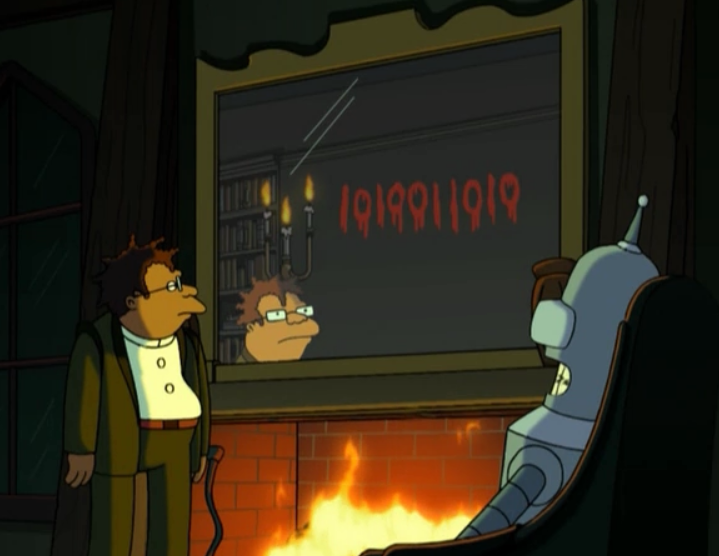
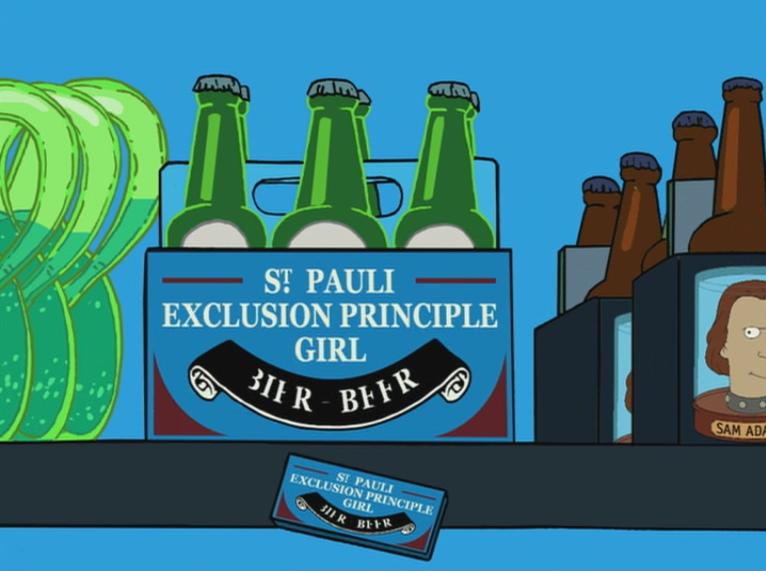
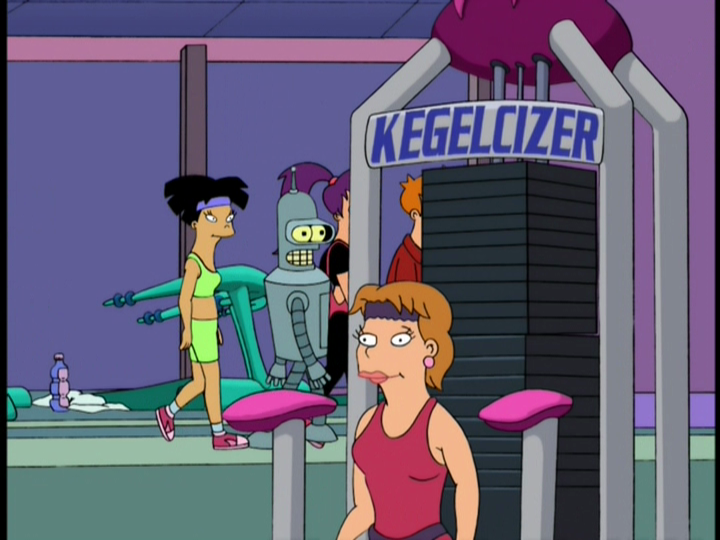
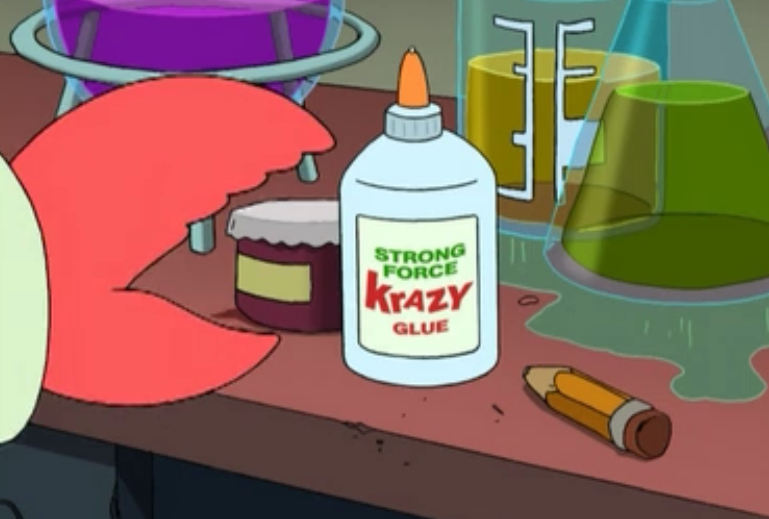
<span class="dsq-postid" data-dsqidentifier="37193 ">27 Comments
I did actually get a couple of those. In the FX series "The League' a little girl names a doll Kegel the Elf. Not as subtle of course.
What's scary is I remember Basic computer language…
WOW! Very informative. I only got the stuff dealing with Computers. The math was a little above me…(that is why I married above me). Hopefully the show will find another way to come back. Netflix, Hulu, or just more straight to DVD movies.
interesting on the computer angle… i don't watch this show all that much, maybe i should.
I never caught onto these while I watched the show. Interesting stuff.
I think also from "The Honking" , there is a portrait on the wall of a robot dressed in old naval attire with the name plate beneath reading "Commodore LXIV"
the evil binary # is my fave! and ive heard of the cat from big bang theory! i learn a lot of geeky facts there!
You kids and your topology.
In the P/NP section you say "It basically asks whether every solution that can be quickly solved by a computer can also be quickly solved by a computer". That first "solved" should be "verified".
There are a bunch of Klein bottles right next to the St. Pauli Exclusion Principle, but these you ignore?
There is a concise explanation of the P versus NP problem at the Clay Mathematics Institute website: http://www.claymath.org/millennium/P_vs_NP/
What's really scary is I remember as a kid we had to learn it because it would be "required" in the future. The 80's ruled. 😉
To further clarify, LXIV is 64, Commodore 64 was an early and very popular personal computer.
I am glad someone other than me caught that 🙂
If you did, you would realize that it does not say "home sweet home" in a loop, it says "home sweet" in a loop, which is not the same. A RETURN and a GO SUB would do it, but I guess that would make the joke a bit hard.
Not that this is the only mistake in the list, mind you.
At 2, the joke actually starts earlier, when they clock Schrodinger with c+15.
4 has bad copypasta
7 is the BASIC one.
And finally, these are just some jokes someone got together, not THE nerdiest jokes. Time travel code is missing, complete with symmetry so that Fry can read it from his behind while looking in a mirror. Mathematical proof of body switching. Bender division episode.
Fixed, thanks!
One of robots at the will reading is a "Euro TRaSh-80" referencing a Radioshack TRS-80.
Imagine my surprise, as the founder of http://theinfosphere.org, hitting my Stumble button and seeing links to the Infosphere! Hooray!
I still have my TRS-80. Blimey.
You do great work! Thanks for commenting!
This article is chock full of win.
Thank you. That helped.
Futurama contains several jokes about the Hardy–Ramanujan number (1729, the first taxicab number, one that is expressible as the sum of two cubes in two different ways). In one episode, Bender receives a Christmas card from the machine that built him labeled "Son #1729". Ken Keeler, a writer on the show with a Ph. D. in applied mathematics, said "that 'joke' alone is worth six years of grad school". In another episode, Bender's serial number is revealed to be the sum of two cubes: his number is 2716057 = 952^3 + (−951)^3, while that of fellow robot Flexo is 3370318 = 119^3 + 119^3. (This datum is one of the pieces of evidence the episode uses to establish that Bender and Flexo are a pair of good-and-evil twins.) The starship Nimbus displays the hull registry number BP-1729, which simultaneously riffs on the USS Enterprise's NCC-1701. Finally, the episode The Farnsworth Parabox contains a montage sequence where the heroes visit several parallel universes in rapid succession, one of which is labeled "Universe 1729" (the universe where Fry, Leela and Bender are all giant rude talking bobbleheads). In the film, "Bender's Big Score", the number of the taxi cab Fry takes home in the past is 87539319, which is the third taxicab number, being the smallest number expressible as the sum of two cubes in three different ways.
in the chapter The Beast with a Billion Backs the Crack That Appears there seems a fract
Fractal is a mathematical structure that almost always have the self-similarity propierty
http://theinfosphere.org/images/d/d0/BWABBp2.jpg
http://www.screenjabber.com/files/futuramaBWBB4.jpg
http://i1.ytimg.com/vi/lQWinuB8nIE/hqdefault.jpg
First explanation is inadequate, second one is plain wrong and misses the point completely. I got bored after that. And Nick Denton gargles donkey milt.
Good one!
https://thegeektwins.com/2013/10/why-is-1729-so-important-to-futurama.html
Fundamentally, her spouse had sat her down and advised her that his affections for her had "changed." obviously, the wife's quick response was to request that he characterize what, precisely, he implied by this. She needed to know things like: did this mean he didn't love her any longer? Did this mean he was no more enamored with her? Did this mean he would not like to be hitched or that he needed a separation? What x sometimes means